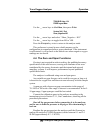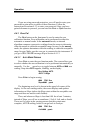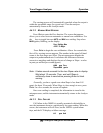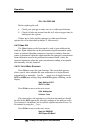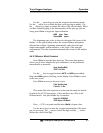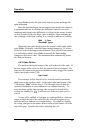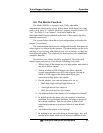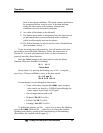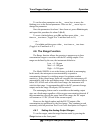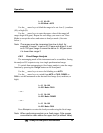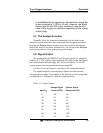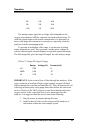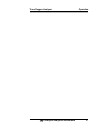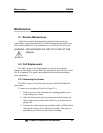
Trace Oxygen Analyzer Operation
Teledyne Analytical Instruments 45
4.5 The Alarms Function
The Model 3000ZA is equipped with 2 fully adjustable
concentration alarms and a system failure alarm. Each alarm has a relay
with a set of form “C" contacts rated for 3 amperes resistive load at 250
VAC. See Table 3-2 in Chapter 3, Installation and/or the
Interconnection Diagram included at the back of this manual for relay
terminal connections.
The system failure alarm has a fixed configuration as described in
chapter 3 Installation.
The concentration alarms can be configured from the front panel as
either high or low alarms by the operator. The alarm modes can be set as
latching or non-latching, and either failsafe or non-failsafe, or, they can
be defeated altogether. The setpoints for the alarms are also established
using this function.
Decide how your alarms should be configured. The choice will
depend upon your process. Consider the following four points:
1. Which if any of the alarms are to be high alarms and which if
any are to be low alarms?
2. Setting an alarm as HIGH triggers the alarm when the
oxygen concentration rises above the setpoint. Setting an
alarm as LOW triggers the alarm when the oxygen
concentration falls below the setpoint.
3. Decide whether you want the alarms to be set as:
• Both high (high and high-high) alarms, or
• One high and one low alarm, or
• Both low (low and low-low) alarms.
4. Are either or both of the alarms to be configured as failsafe?
5. In failsafe mode, the alarm relay de-energizes in an alarm
condition. For non-failsafe operation, the relay is energized
in an alarm condition. You can set either or both of the
concentration alarms to operate in failsafe or non-failsafe
mode.
6. Are either of the alarms to be latching?
7. In latching mode, once the alarm or alarms trigger, they will
remain in the alarm mode even if process conditions revert



